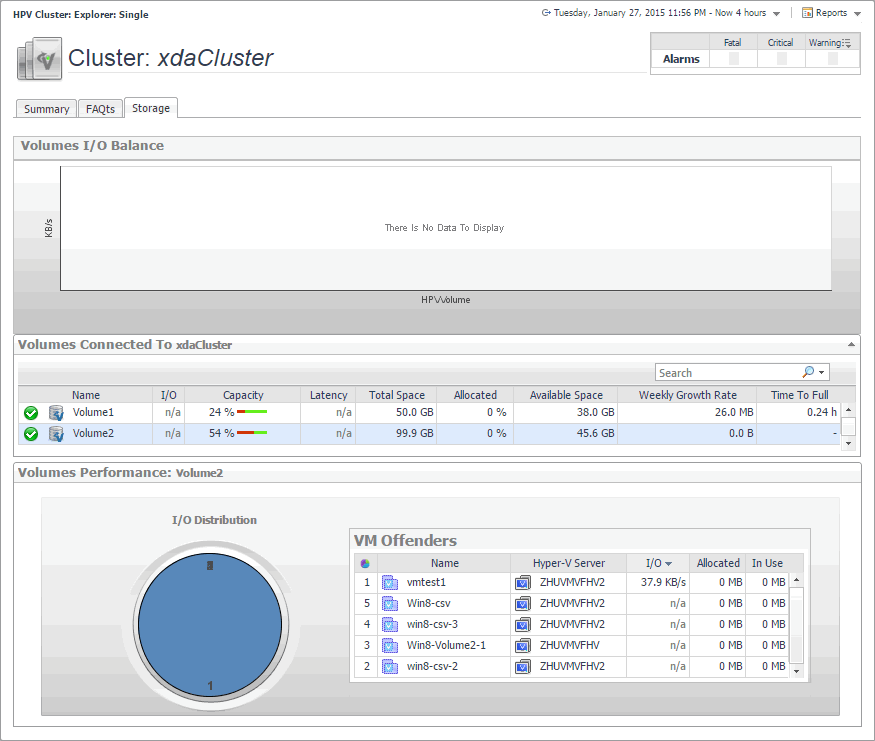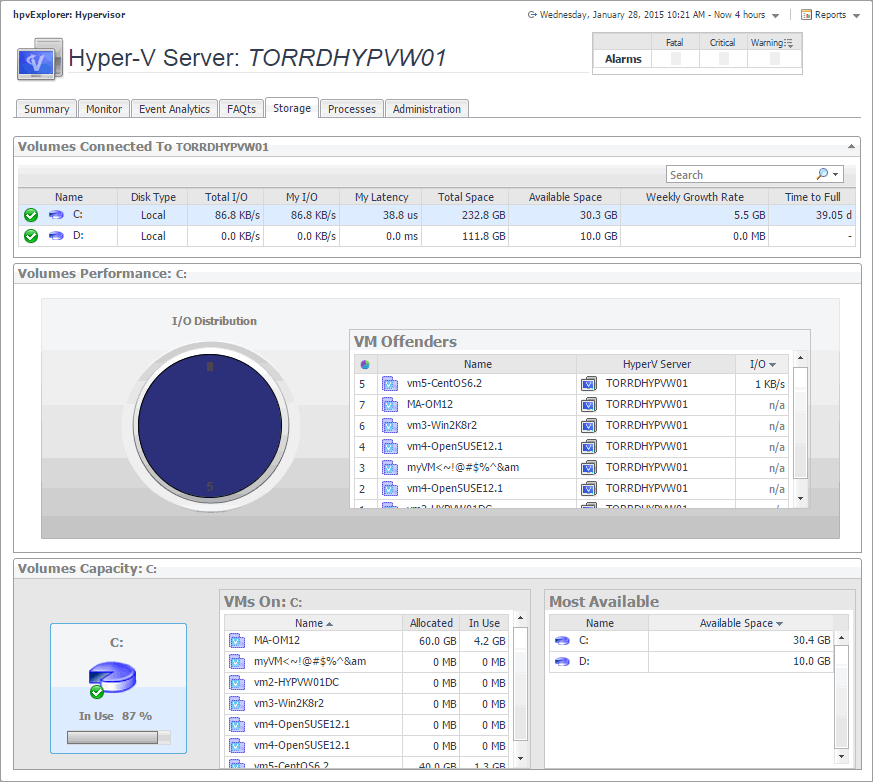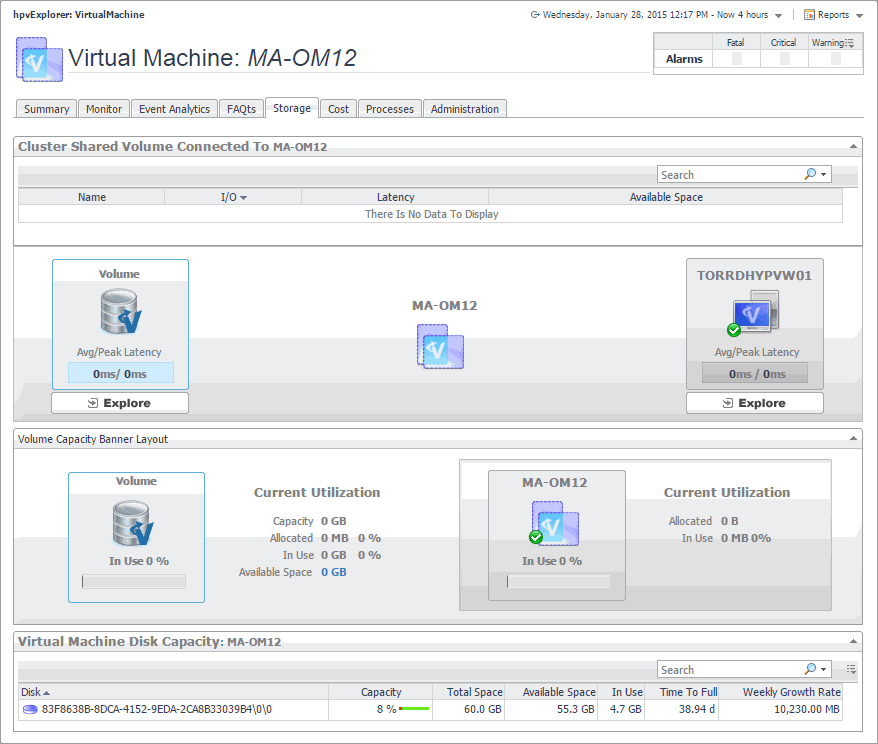Hyper-V Explorer Storage tab (clusters)
The Hyper-V Explorer Storage tab displays combination of embedded views displaying disk volumes associated with the selected cluster. It identifies the virtual machines that spend the highest amounts of disk resources. Use this tab to find out more about the overall consumption of disk resources for a given cluster. The information provided on this tab can help you prevent potential bottlenecks by reallocating disk resources where they are most needed.
This tab appears in the Hyper-V Explorer when you select a cluster on the Hyper-V Explorer Topology tab.

This tab is made up of the following embedded views:
Hyper-V Explorer Storage tab (Hyper-V servers)
The Hyper-V Explorer Storage tab displays combination of embedded views displaying disk volumes associated with the selected Hyper-V server. It identifies the virtual machines that spend the highest amounts of disk resources. Use this tab to find out more about the overall consumption of disk resources for a given Hyper-V server. The information provided on this tab can help you prevent potential bottlenecks by reallocating disk resources where they are most needed.
This tab appears in the Hyper-V Explorer when you select a Hyper-V server on the Hyper-V Explorer Topology tab.

This tab is made up of the following embedded views:
Hyper-V Explorer Storage tab (virtual machines)
The Hyper-V Explorer Storage tab displays combination of embedded views displaying disk volumes associated with a selected virtual machine. It identifies the virtual machines that spend the highest amounts of disk resources. Use this tab to find out more about the overall consumption of disk resources for a given virtual machine. The information provided on this tab can help you prevent potential bottlenecks by reallocating disk resources where they are most needed.
This tab appears in the Hyper-V Explorer when you select a virtual machine on the Hyper-V Explorer Topology tab.

This tab is made up of the following embedded views:
Hyper-V Monitoring in Foglight Evolve Cloud alarms
Hyper-V Monitoring in Foglight Evolve Cloud triggers alarms when certain thresholds are reached. You can review the existing alarms on the Hyper-V Alarms dashboard.